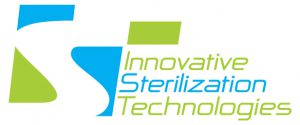Barbara Ann Harmer, MHA, BSN, RN, Vice President of Clinical Services – ONE TRAY®
Article posted by ASORN, May 2021
Always begin the preparation for instrument decontamination at the point of use. Instrument manufacturers IFUs provide instructions for decontamination, cleaning and processing that are required to achieve the needed results.
Transport contaminated instruments to the decontamination area as soon as possible after completion of the procedure. A closed container that is leak proof, puncture resistant and large enough to transport all the contaminated materials while closing the lid tightly. A visible label which indicates that it is hazardous should be located on the container.
Personnel working in the decontamination area and handling contaminated instruments must wear PPE consistent with the risk of exposure. The workflow in the decontamination area should be designed for directional flow from dirty to clean. Decontamination and cleaning should be performed in an area separate from areas where clean and sterile items are handled.
Regulatory requirements dictate that the decontamination area contain an eyewash station and a handwashing sink used exclusively for that purpose. The area should contain multiple sinks that are designed for decontamination and cleaning that are large enough to accommodate the instrument trays and the sinks should have markings for water level requirements required for all cleaning solutions. If using a cleaning solution that requires a temperature range, have a reliable thermometer, and record the temperature at multiple times during use. When the solution does not meet the minimum temperature per the IFU, discard the water and start over again. There should also be enough space in the room for PPE, supplies, counterspace for any automated equipment that would be used and workspace for documentation.
Ophthalmology instrumentation needs cleaning materials of the correct size (brushes and other devices). Non-linting cleaning cloths may prevent scratches to the surface of instruments.
Chose cleaning products that are compatible with and do not cause damage to the instruments and devices. Critical water should be used for the final rinse. Residues on instruments from untreated water can lead to staining, pitting or corrosion. The color of a stain may give clues to its’ source.
The HVAC system covering the decontamination area should be within the design parameters that were applicable at the time of design or most recent renovation of the HVAC system.
Through all phases of decontamination, cleaning and processing inspect instruments before repackaging for sterilization. The recommendation is for inspection to be done either through a microscope or with a magnified lens. Remove all damaged instruments and send to the appropriate repair service or back to the manufacturer. Repair services should include testing, inspecting, and evaluating the instrument. Once returned from the repair service, the instrument(s) should be decontaminated and cleaned before being put back into a tray.
Maintain records of any service performed on items sent for repair or maintenance.
The organization is responsible for providing staff education and training and maintaining competency for the skillset related to decontamination, cleaning and the care of surgical instruments.

